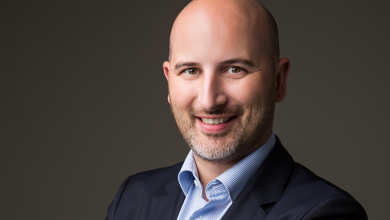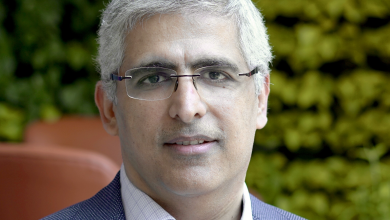
In a business landscape increasingly shaped by algorithms and automation, Keira Krenek stands at the intersection of creativity and code. A brand strategist and designer, she’s known for helping founders and small businesses build brands that don’t just look good, but perform well.
Through her Boston-based company, Elementsist, Krenek transforms traditional branding into an intelligent, system-driven process that merges strategy, visuals and AI-powered optimization.
Armed with a background in Fine Arts and a Master’s in Communications, Krenek’s career began with creative storytelling but evolved into a mission to make strategic, data-informed branding accessible to everyone. Her Brand Alchemy framework combines design thinking with automated systems, enabling businesses to scale their brand presence without losing their human touch.
In this conversation with The AI Journal, Krenek shares how artificial intelligence is transforming the way brands are built, how Google reviews have become central to trust and visibility, and why the future of branding lies in balancing automation with authenticity.
1. How are you using AI to personalize your services or improve client experiences? Could you share a few real-world examples?
The Aurum Agent is our custom-trained AI tool that makes our strategic branding process accessible to more people. Normally, I would do 90 to 120-minute live strategy interviews then take a week to write the strategy by hand, but the Aurum Agent lets our clients walk through that same process on their own.
It’s trained on the exact structure and methodology I use, as well as many of my past client strategies across industries and brand types. It personalizes their strategy based on their unique business, goals and challenges. This is the same level of work we do for our full-service clients, just now delivered without needing to wait for me or paying the price of my time.
Instead of locking strategy behind a five-figure price tag, we give people the tools to create a real brand roadmap through this agent. That’s how we scale personalization. We’ve made something that used to be high-touch available at scale without compromising quality.
And the reason this matters so much is because more and more people are asking, “How do I make sure my business is optimized for AI?” We now offer AI Visibility VIP Days because of that demand. These cover three key areas including site structure and technical SEO, on- and off-page optimization, and online sentiment and reputation management, so AI models can find and understand what your business does and why people trust you. Without AI, none of that would be possible at scale.
2. Emerging technologies like augmented reality and the metaverse are changing how brands connect with audiences. How do you see these tools shaping the future of brand management?
Honestly, immersive tech like AR and the metaverse isn’t something I. I work with a lot of solopreneurs, small teams and service providers, and no one is coming to me asking how to build a showroom in the metaverse. That’s not where the focus is. Right now, the priorities are about being visible, clear and human.
That doesn’t mean immersive tech doesn’t have a future in branding. If I were to explore it, I’d want to build something like a virtual brand experience where people could walk through and interact with the different layers of their brand strategy. That could be powerful, especially as a teaching or onboarding tool. But until it becomes more practical and relevant to the kinds of businesses I serve, I’m more focused on what’s moving the needle for them now.
3. Social media has blurred the lines between consumers and influencers. In your view, how has this shift impacted brand storytelling and trust?
Trust comes from showing up as a real person. AI is everywhere, and people are starting to question what’s real. The best thing a brand can do is be human. Show your face and speak directly to your audience. Let them know who’s behind the brand. That’s how connection and trust are built.
I’ve used AI visuals of myself before when I’m sick or traveling, but it’s still me. That’s very different from inventing an AI persona to represent my brand. There’s a line, and I’m mindful of it.
I also don’t think performance branding or performance marketing has to feel inauthentic. Retargeting and paid traffic help you get in front of people more than once, and that’s necessary. But you can still keep it human.
I believe in native social advertising, ads that blend seamlessly with organic content. Memes, personal stories, and value-driven posts connect more authentically with audiences. People are tired of being sold to, but they’re not tired of genuine connection. That’s the power of great brand storytelling.
4. Looking ahead, what do you think will define successful brands in the next five years — creativity, technology or human connection?
It’s going to be a mix, depending on the part of the business. But from a customer perspective, human connection and creativity will matter most. Tech is essential behind the scenes, but it’s not what people feel when they interact with your brand.
Brands that win will be the ones who can stay creative and adaptable without losing their identity. They’ll keep reinventing how they show up, but they won’t abandon their values or voice. And they’ll use tech to support and scale that creativity, not replace it.
Human connection is how you stay memorable. I love how brands like Lush or American Apparel used to include the name of the person who made your product on the tag. That small touch turned a big brand into a personal experience.
The mistake I think brands will keep making is not optimizing for how AI is shifting discovery and visibility. If your brand isn’t structured to be understood by search engines and AI models, you’ll get left behind. On the flip side, if you lean too far into automation and lose the human element, people will stop caring. It’s a balance.
And people want brand experiences that feel personal and interactive. They want to be part of something, not just followers. That’s what’s next, community, personalization and connection.
5. Lastly, could you tell us what inspired the Brand Alchemy Mastery Course and how interested professionals can get involved?
Brand Alchemy Mastery (BAM) exists because I saw a real gap. So many people understand the value of strategic branding, but can’t afford a full-service agency. I didn’t want price to be the reason someone couldn’t access the kind of work that could truly move their business forward.
So I built BAM as a Done-With-You membership that combines education, support and tools. The centerpiece is the Aurum Agent, which helps members build their personalized brand strategy without needing me live for the strategy session. It guides them through the same strategic process we use with agency clients.
And the feedback has been amazing. People tell us things like, “I understand my business so much more clearly now,” or “This brought up things I never even thought of before.” Someone even said it felt like therapy for their brand. That feedback comes directly from using the Aurum Agent. It doesn’t just generate a generic plan; it reflects their goals back to them in a way that makes them feel seen and capable.
We’re relaunching BAM with a second beta group in early 2026. Anyone who’s interested can reach out through our website and fill out the contact form.
The interview is edited for length and clarity.




